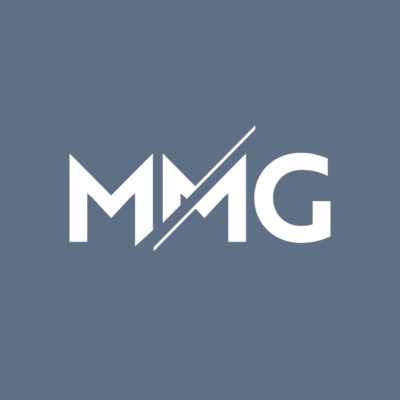MARKET SNAPSHOT
$1,485 3Q 2024
90.4% 3Q 2024
2,063 [YTD: 5,638]
-2.3% 3Q 2024
-70 BASIS POINTS
1,969 [YTD: 6,658]
Despite a historic supply wave, Jacksonville’s rental market recorded strong rental demand through Q3 2024, with a robust net absorption of 5,638 units through the first three quarters of the year.
The recent decline in construction starts is anticipated to support a gradual recovery of rental rates and occupancy rates leading into next year, with rent growth forecasted to rise above 2% by the midpoint of 2025.
The Southside submarket remains the focal point for apartment development, with 4,100 units opening their doors in the past year alone.
2,063 UNITS
[YTD: 5,638]
Jacksonville’s apartment market showed encouraging signs of stabilization in Q3 2024, with net absorption totaling 2,063 units—slightly surpassing the number of units delivered during the same period. This marks a significant improvement compared to the previous year, when deliveries outpaced net absorption by a ratio of 3 to 1. The Southside submarkets have been the primary drivers of demand over the past year, and in Q3 they continued to lead with a net absorption of 706 units. This was substantially higher than any other area, contributing approximately one-third of the market’s overall net demand figure.
1,969 UNITS
[YTD: 6,658]
While Jacksonville is benefiting from increasing demand in 2024, the market narrative continues to focus on the supply side. A total of 6,658 units were completed in the first three quarters of 2024, with an additional 1,314 units expected by year-end. However, construction starts are rapidly decelerating. Through the third quarter, approximately 2,000 units have broken ground—a figure moderately below levels observed during the same timeframe in the pre-pandemic period. This suggests a shift back to more typical levels of unit deliveries by 2026. The Southside submarket remains the leader in new completions, delivering over 940 units in the third quarter of 2024, while the Saint Augustine submarket closely follows with 600 units completed.
Amid a surge in new supply, Jacksonville’s apartment market continues to feel the pressure, with the average occupancy rate falling to 90.4%—a decline of 70 basis points year-over-year. However, occupancy improved by 40 basis points quarter-over-quarter, suggesting signs of stabilization. Submarket performance varied widely: Central Jacksonville struggled with an occupancy rate of 86.7%, while Nassau County outperformed, maintaining rates above 94%. Despite overall market challenges, more affluent submarkets have demonstrated resilience by sustaining high occupancy levels and reinforcing their appeal in the market.
Jacksonville’s multifamily market continues to adjust to the impact of 8,378 new units added over the past year, which has created an intensely competitive environment to attract renters which led to a 2.3% year-over-year decrease in average effective rents in the third quarter of 2024, with average effective rents now standing at $1,485 per month. However, the first sign of stabilization materialized, as average rents increased by 70 basis points from the second to third quarter of 2024.
Premium submarkets such as Baker County and Downtown Jacksonville—where average rents exceed $1,600—have shown resilience, recording rent increases of 5.2% and 1.7%, respectively. More affordable areas like Central Jacksonville and West Side are also experiencing rent growth, as their lower base rents provide landlords more flexibility to adjust rates upward.
Looking ahead, the recent decline in construction starts is expected to aid in the gradual recovery of rental rates, setting the stage for a projected 2% to 3% rent growth in mid to late 2025. Despite current challenges, Jacksonville’s solid economic foundation and steady population growth position the market for long-term success.
In August 2024, Jacksonville’s job market demonstrated significant strength, according to the Bureau of Labor Statistics (BLS). The metro area added 13,400 new jobs, reflecting a 1.7% job growth rate. The Education and Health Services sector led with 3,800 new jobs, marking a 3.0% annual increase. The Government sector also saw robust growth, adding 2,800 positions—a 3.5% expansion. Jacksonville’s unemployment rate remained low at 3.7%, up 30 basis points from the previous year but still below the national average of 4.2%.
August 2024 ANNUAL JOBS CREATED
AUGUST 2024 EMPLOYMENT GROWTH
AUGUST 2024 Unemployment rate
4.2% us august rate
Nominal Change
from August 2023
to August 2024: 3,800
Percent Change: 3.0%
| Sector | Nominal Change from August 2023 to August 2024 | Percent Change |
|---|---|---|
| Education and Health Services | 3,800 | 3.0% |
| Trade, Transportation, and Utilities | 2,900 | 1.7% |
| Government | 2,800 | 3.5% |
| Leisure and Hospitality | 2,700 | 2.9% |
| Mining, Logging, and Construction | 2,600 | 5.1% |
| Other Services | 1,200 | 4.3% |
| Professional and Business Services | 100 | 0.1% |
| Manufacturing | -100 | -0.3% |
| Information | -300 | -2.0% |
| Financial Activities | -2,200 | -2.9% |

The University of Florida and UF Health have celebrated the groundbreaking of UF Health Durbin Park, a 42.5-acre health and wellness campus in northeast St. Johns County.

Publix is set to establish a cutting-edge central fill pharmaceutical facility in St. Johns County, FL.

HOLON, global leader in EV manufacturing, is building its first US production plant for autonomous electric shuttles in Jacksonville, FL.
Jacksonville boasts one of Florida’s most diversified industry bases, making its economy more resilient to sector-specific downturns compared to other metro areas reliant on retail and tourism. The metro’s robust population growth, fueled by a favorable business climate and affordable living costs, has attracted significant investment in residential development. Although the surge in new housing has temporarily pressured rental rates and occupancy, the long-term outlook remains positive. Jacksonville’s strategic location—home to four Fortune 500 companies—and major projects like UF Health’s billion-dollar Durbin Park development, alongside expansions by firms such as Amazon, Hermeus, Publix, and HOLON, further enhance its appeal to businesses and residents alike. These initiatives are expected to create jobs, stimulate economic growth, and boost housing demand, thereby absorbing the current oversupply. While the multifamily market is in a short-term adjustment phase, Jacksonville’s strong economic fundamentals position it for sustained success.
Sources: Costar; ESRI; U.S. Census Bureau; Yardi Matrix; U.S. Bureau of Labor Statistics









